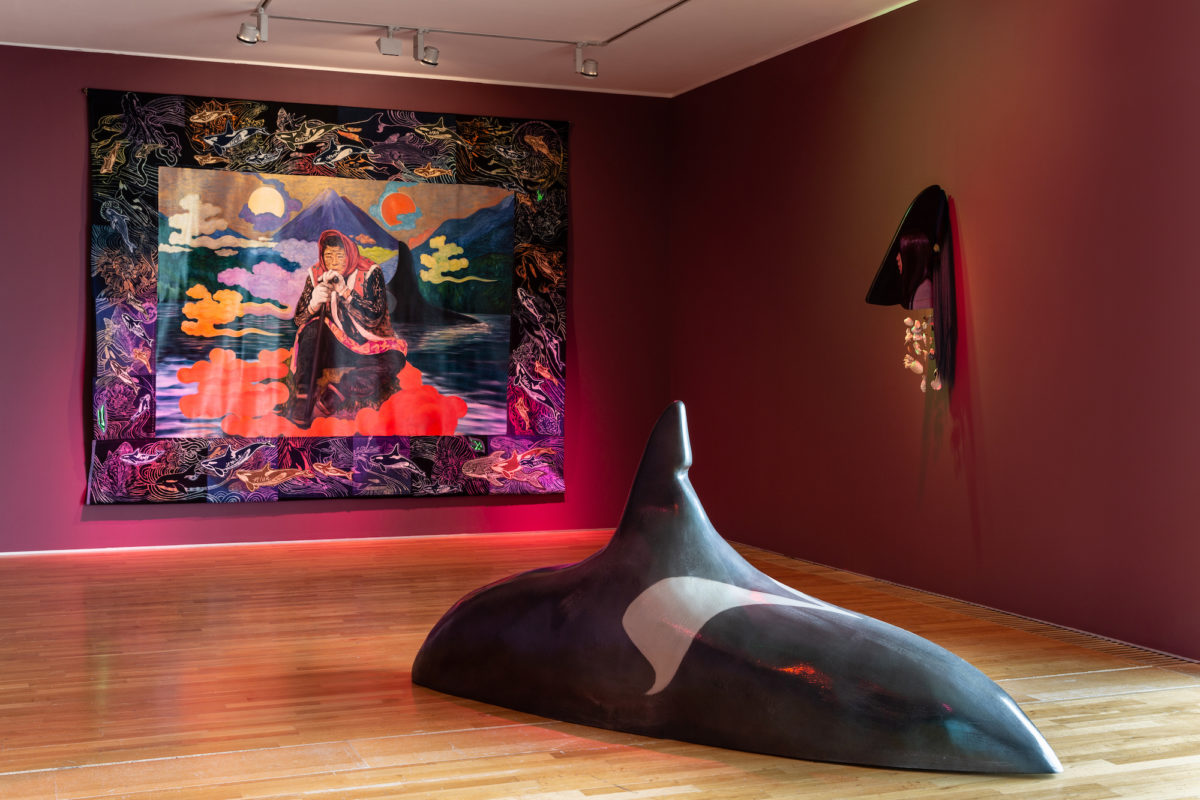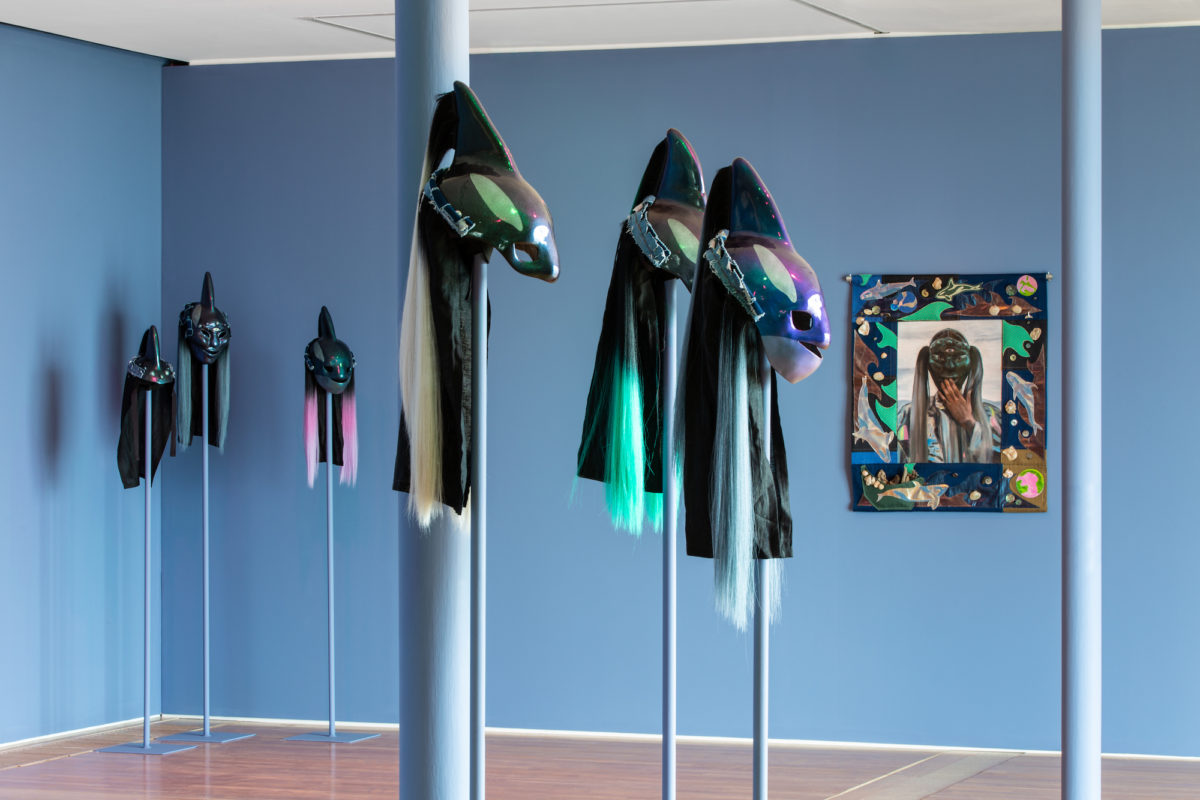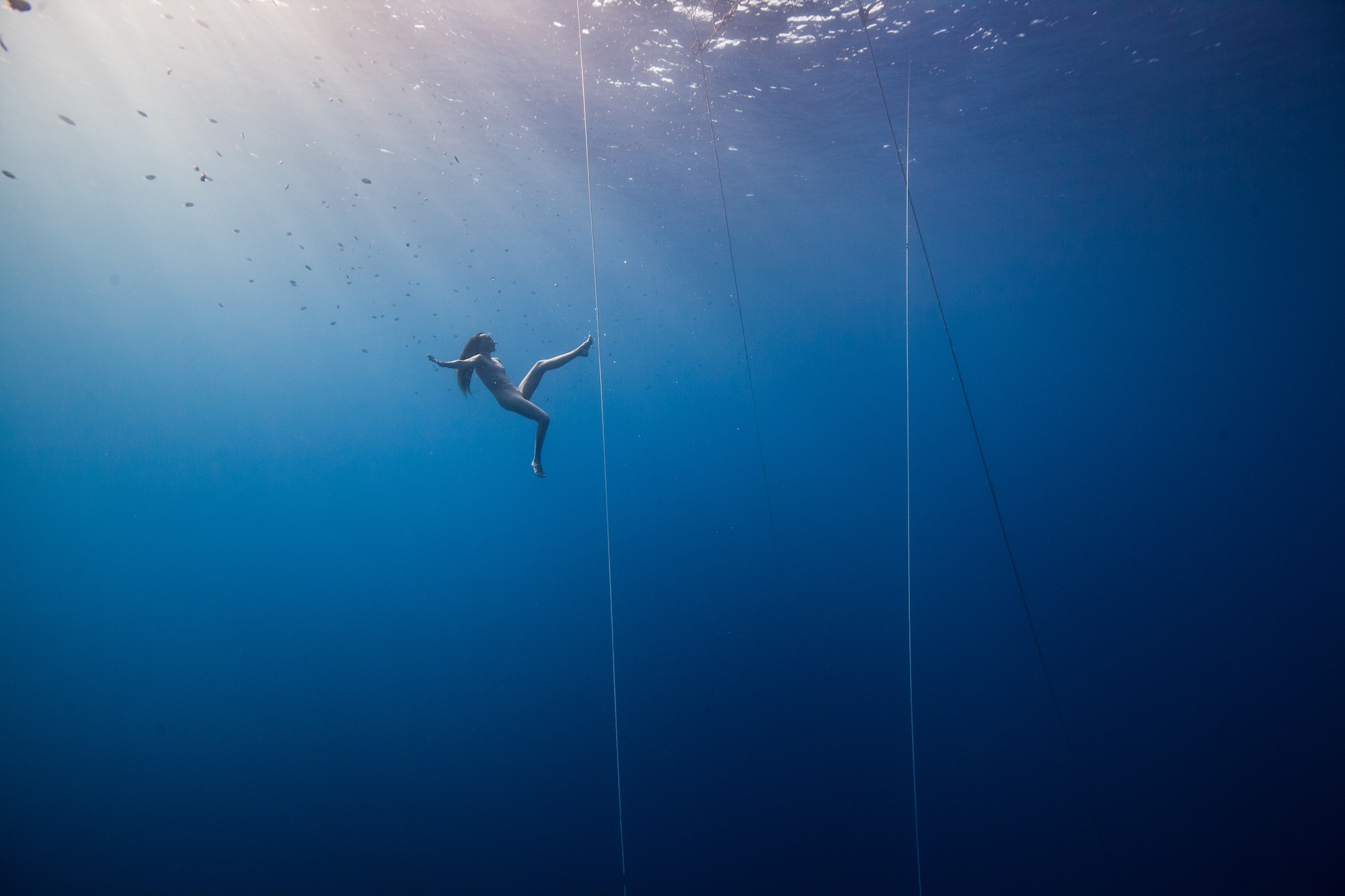
The ocean is the ultimate mystery. Despite covering two thirds of our planet and functioning as a primary source of travel, transportation and sustenance for millennia, its depths remain almost entirely unknown. As the great David Attenborough states, “we know less about our oceans that the surface of the moon”. And while the upper echelons of these great bodies of salt water have been the subject of entire artistic genres, from maritime activity and coastal landscapes to seaside slapstick, the subaquatic world offers something more alluringly alien. One need only consider the vast mythologies surrounding the “deep”, from the Lost City of Atlantis to the horrors of the Kraken, to understand its appeal.
- Zadie Xa’s Child of Magohalmi and the Echoes of Creation at De La Warr Pavilion
has used the ancient ocean as a backdrop on which to impose her historic and imagined folkloric tales, inspired by both Korean oral histories and the coast of Vancouver, where she grew up. In an interview for her exhibition at De La Warr Pavilion, titled Child of Magohalmi and the Echoes of Creation, she explains that, “I often think about the deep ocean and outer space to be very similar, in the sense that they are spaces that most people feel they understand, but few of us have actually physically experienced. Because of this, it allows for so much imagination.”
“Each performer successfully evoked the essence of the ocean through animalistic movement and surreal, aquatic modes of dress”
One of the most compelling aspects of Xa’s work is her ability to convey so many elements of an oceanic environment with few direct references to the physicality of water. While her installation at both De La Warr and Art Night in Walthamstow feature footage of waves and coastline, it is the ambient lighting and sculptural forms of shells and orcas (which somehow remain enigmatic as opposed to kitsch) that embed an essence of submersion, not to mention the elaborate costuming created for her performers with Benito Mayor Vallejo, complete with whale masks and tendrils of dip-dyed hair.

Indeed, at the 2019 Venice Biennale her performances took place in the luscious grounds of the Giardini, but each figure successfully evoked the essence of the ocean through animalistic movement and the same surreal, aquatic modes of dress.
Xa built this watery world in order to reimagine the narrative of the goddess Magohalmi, a matriarchal creator who formed all of nature, and who has been gradually written out of history. The fact that Xa chose to situate her within the realms of the ocean is testament to its unassailable elemental force, as well as the feminist connections that lie within orca pod matriarchies and tidal cycles.

Laure Prouvost, Deep See Blue Surrounding You / Vois Ce Bleu Profond Te Fondre, French Pavilion at the 58th Venice Biennale, 2019 © Holly Black
Laure Prouvost built another aqueous environment at in the Giardini, this time transforming the entirety of the French Pavilion into a magical grotto. Deep See Blue Surrounding You/Vois Ce Bleu Profond Te Fondre was filled with flotsam and jetsam, recalling the vast pollutants that populate our oceans, as well as bizarre objects that look as if they might decorate a mermaid’s living room, and all-consuming, disorientating light sequences. Conceived as an “escapist journey”, this installation was rooted firmly in the realms our imagination, instilling something akin to childlike wonder, solidified by a strong dose of absurdity.
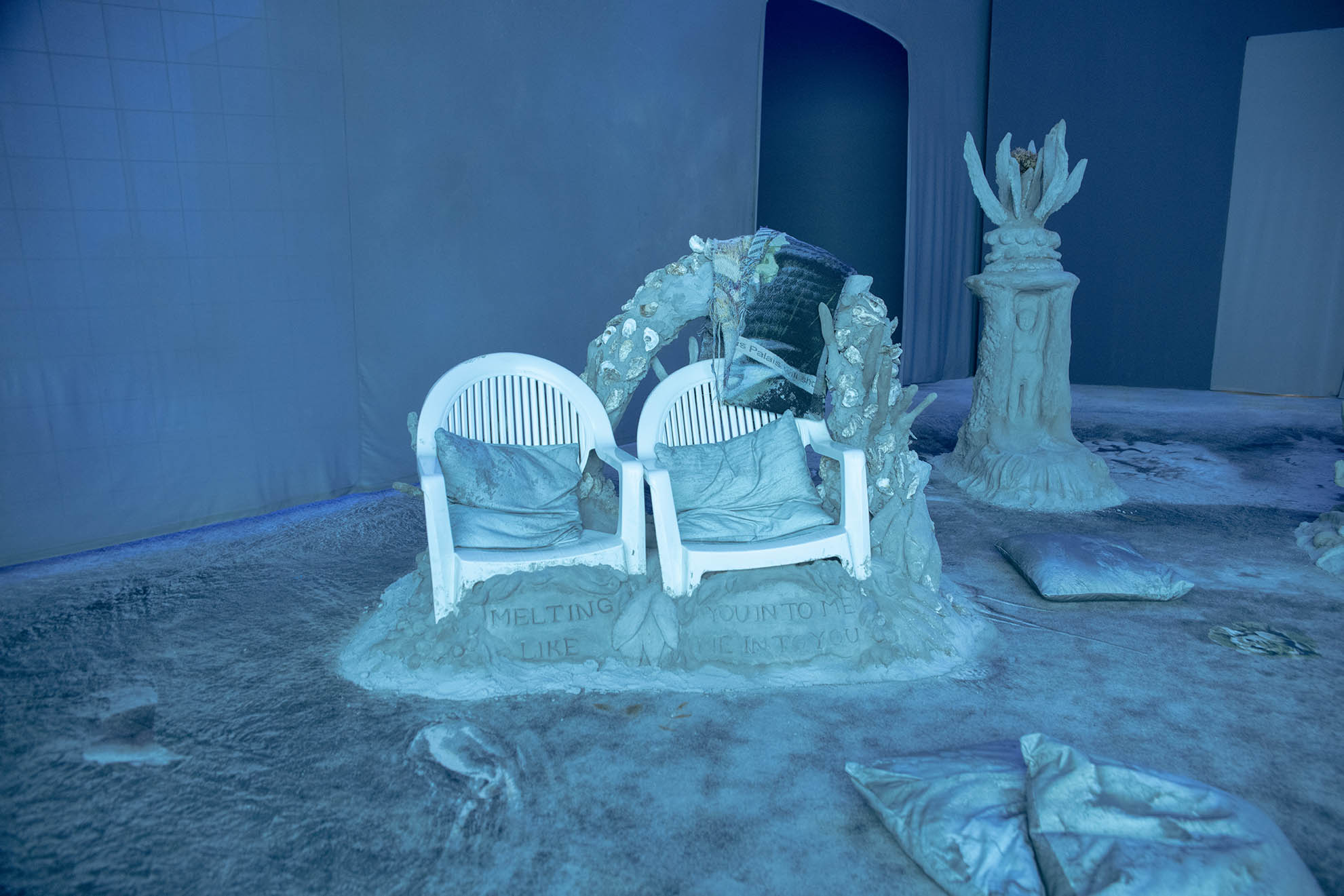
Chris Sharp, curator of the upcoming The Imaginary Sea exhibition at Fondation Carmignac on Porquerolles Island, points to a similar mix of imagination and ecological foreboding, as the primary reason so many artists continue to explore the subject: “I think this is largely due to its vast unknowability. Not only does it function as a perfect metaphor for the unconscious when that is, so to speak, ‘discovered’, but it is also a space teeming with untold life. As such, it seems to feed right into the imagination, continually refreshing it.”
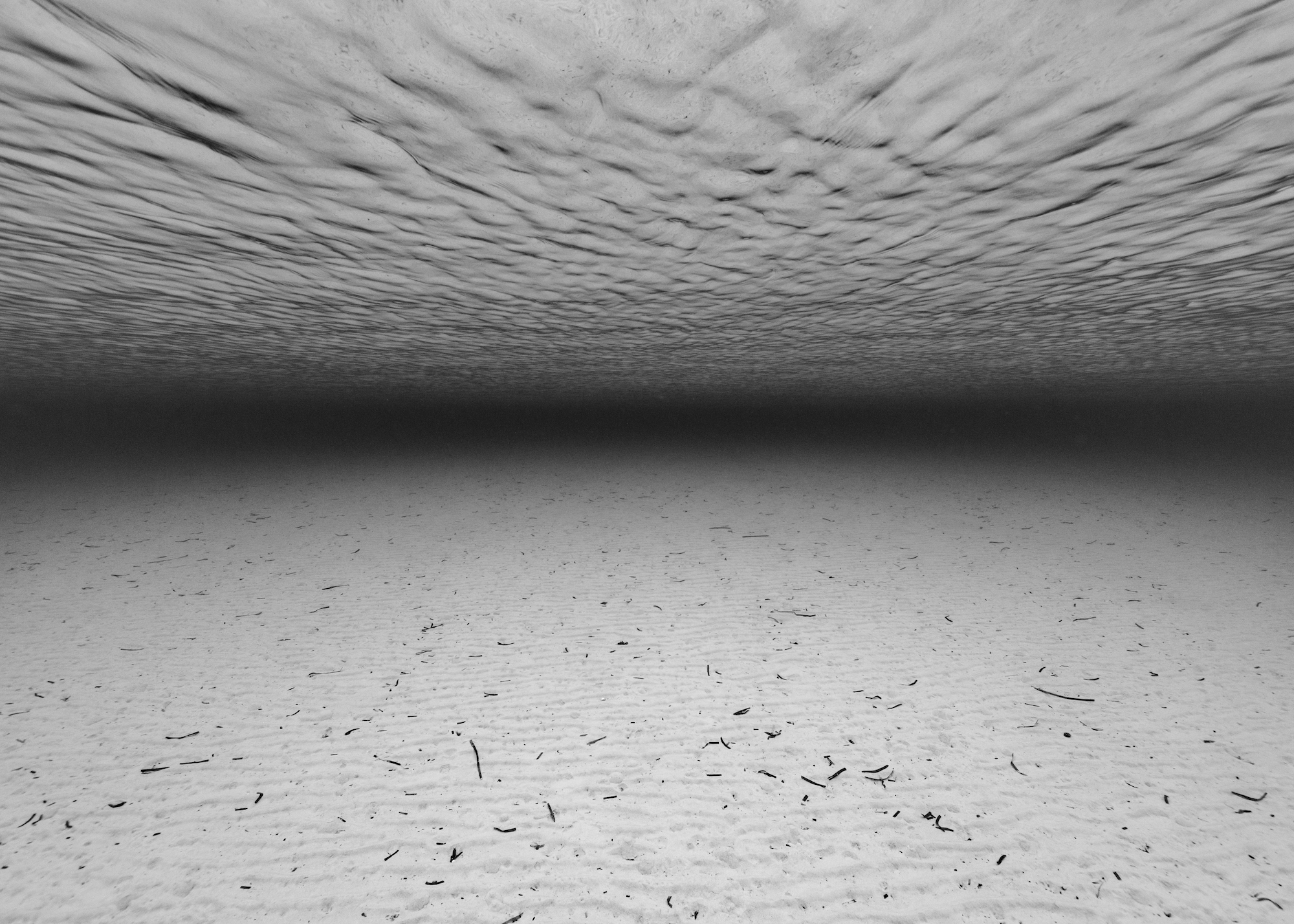
The show takes the Villa Carmignac’s unique setting, which features a partially submerged glass ceiling, as the starting point for various watery explorations, with many of the most compelling examples focusing on the more cerebral representations of the ocean. These include photographer Nicolas Floc’h, who will record the colors of the sea surrounding the island, and transpose them into window filters, thus distilling the natural interplay of water and light. Meanwhile, painter Miquel Barceló creates what has been termed an “environmental painting”, which will once again immerse the audience in a representation of the sea. Sharp hopes that the show will “somehow convey the subject in all its complexity and elicit just as many feelings—surprise, joy, laughter, as well as melancholy, tragedy and loss.”
While all of these examples involve a degree of speculation, translation and transposition, Martina Amati is one of the few artists who have experienced the wonders of the ocean’s depths first hand. She is a freediver, meaning she travels great distances underwater without breathing apparatus. She explains that, “I dive to 30 meters depth—the height of a 10-story skyscraper—on a single breath of air… I let go of everything and enter a totally new world.”
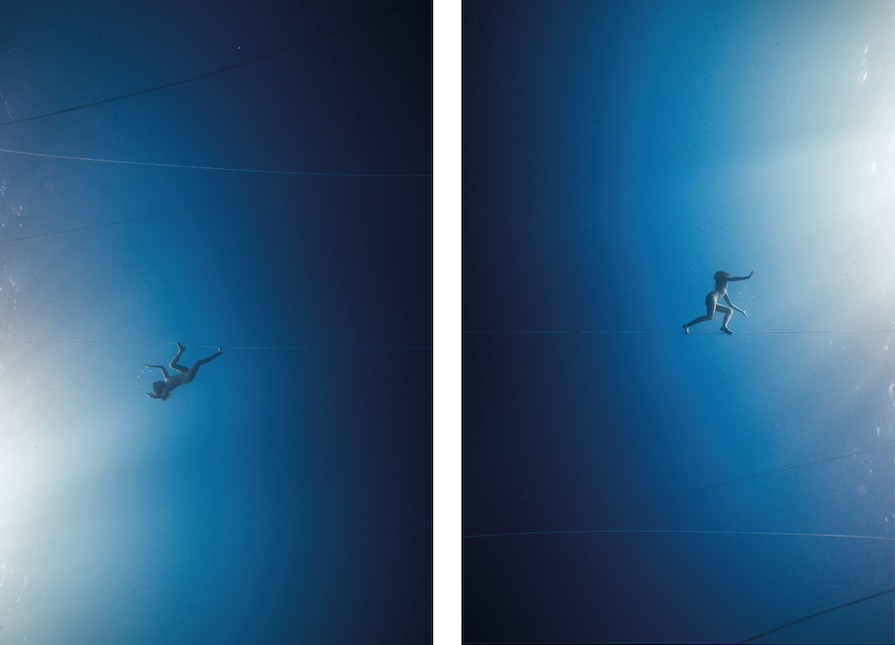
She has captured extraordinary footage of her dives alongside British Champion Liv Philip. Her multi-screen film project Under
oscillates between intense, shadowy scenes where the swimmers descend and ascend with the aid of a rope, and astonishingly tranquil moments that resemble a gravity-defying dance. When installed at Ambika P3 in London, Amati created an incredible suspended video platform that allowed visitors to step beneath her footage as if they themselves were submerged. The stunning framing and somewhat disquieting semi-silence is jaw-dropping, and the exceptional feats of human physicality demonstrated by the divers are made all the more ethereal by the desolate expanses of water that surround them.
For Amati, the ocean offers peace and a chance for introspection: “Each dive is a discovery, where I open myself to unfamiliar sensations and feelings. The water saved my life, twice, when I found myself in my darkest places. Outside the water I try, I imitate, I struggle, I pretend. Underwater I am.”
